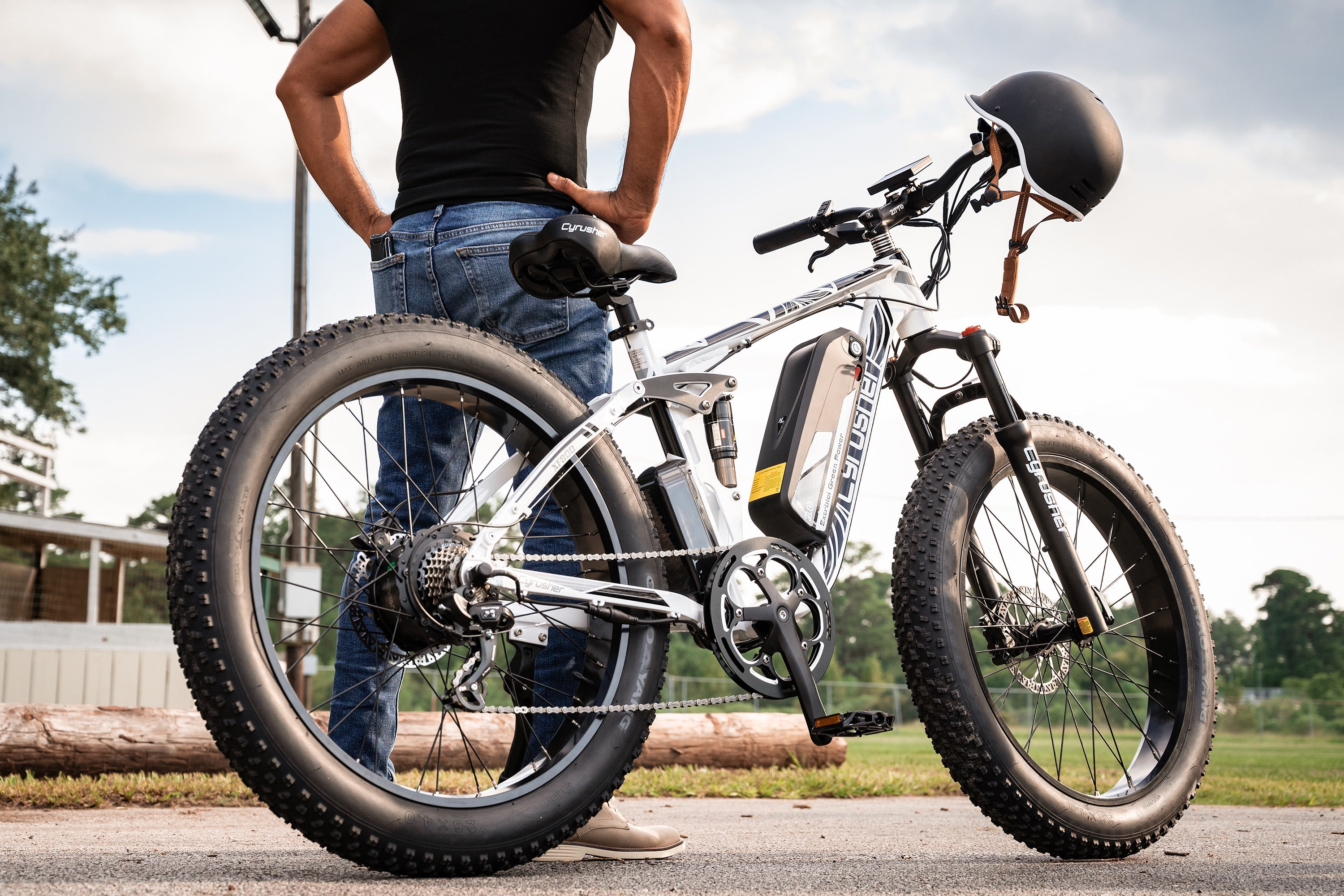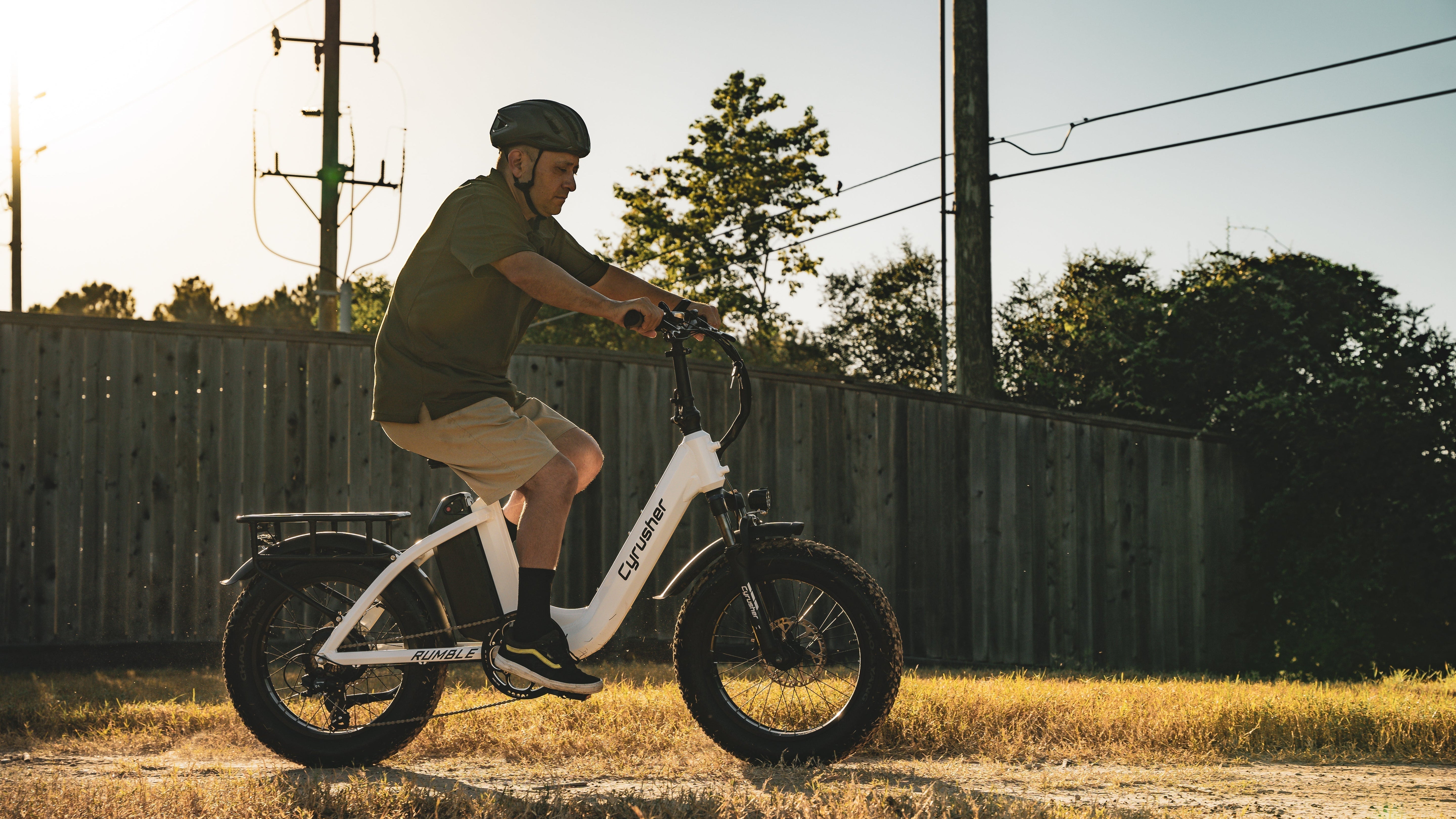Electric bikes are becoming increasingly popular as a convenient mode of transportation. Unlike traditional bikes, electric bicycles have an electric system that enhances travel efficiency. Apart from this key feature, there are other differences between electric bicycles and regular bikes. This article aims to explore these distinctions in depth to provide a comprehensive understanding of electric bicycles for all readers.
How does an electric bike work?
Electric bicycles use electric motors to assist in pedaling, reducing the reliance on manual effort for propulsion. These bikes typically come equipped with essential components like motors and batteries for electric power. The motor can be positioned in various locations on the bike, such as the front hub, rear hub, or in the middle. By converting electricity into mechanical energy, the electric motor drives the wheels forward. Additionally, electric bicycles incorporate sensors to monitor riding speed and adjust the speed gear according to the rider's requirements.
The Cyrusher fat tire e-bike provides three-speed operating modes commonly found in e-bikes:
- Pedal-only mode: This mode relies on pedal power for movement without any electric assistance.
- Pedal-assist mode: In this mode, electric assistance is activated while pedaling, allowing for varying levels of speed by adjusting gears.
- Throttle-only mode:This mode is entirely reliant on electric power for movement and can propel the bike forward without the need for pedal assistance.
Therefore, electric bicycles effectively blend human power with electric assistance, making cycling more accessible and accommodating riders with varying levels of physical strength.
How does a bicycle work?
As one of the common means of transportation, bicycles are a popular choice for people to travel for leisure exercise. Bikes work by using the rider's pedaling force to rotate the cranks connected to the chain. Finally, the chain drives the wheel to rotate and the wheel moves forward. Typically, bicycles use pedaling to create energy that moves the bike forward, making cycling a physically demanding activity.
Electric bikes vs regular bikes
Convenience and ease of use
Electric bicycles operate with the assistance of electric power, making them easier to use. These bikes often feature larger frames and wide tires to handle diverse terrains and offer a stable, comfortable ride. Compared to traditional bicycles, electric bikes require less balance, enabling riders to maintain control and start riding more quickly. In throttle-only mode, simply twisting the throttle propels the bike forward without the need for additional pedaling.
Cycling demands relatively higher physical strength and balance. It involves coordinating the body to maintain balance while pedaling. This simultaneous use of legs and hands can be challenging for riders with physical limitations. Since bicycles rely solely on pedaling, extended rides can be physically demanding.
Speed and Efficiency
When it comes to speed, electric bicycles outpace traditional bikes. Electric bikes use electric power to reach speeds of 15 to 20 miles per hour, enhancing daily commuting efficiency. With less physical exertion required, riders experience less fatigue on longer journeys and can cover greater distances comfortably. The fat tire design of electric bicycles enables them to navigate diverse terrains, enhancing the potential for outdoor adventures.
When riding a bicycle, how fast you go mostly comes down to how often you pedal. The more you ride, the more tired you get, which can slow you down. While mountain bikes are great for off-road adventures, they need more skill to handle and can be risky for new riders.
Eco-Friendly Transportation
Sustainable development awareness are getting more popular these days. Electric bikes have an edge over cars as they help cut down on carbon emissions. Even though some emissions happen during production phase, they can achieve zero-emission during road use, which has positive impact for the environment. They can be a step towards zero-carbon goals and are efficient for commuting, easing traffic and noise caused by urban traffic.
Traditional bikes powered by people also help cut down on carbon footprints and can reduce carbon dioxide emissions. However, electric bikes offer more efficient propulsion during travel.
Health and Fitness Benefits
Riding electric bikes and regular bicycles can help improve overall health. Electric bikes make it easier to pedal by providing electric assistance, but they still offer a good workout in throttle only mode. On the other hand, traditional bikes rely solely on your physical effort for movement, which can be a great workout but might lead to burnout if not used regularly. Electric bikes with their adjustable exercise levels can motivate riders to cycle more often, leading to lasting health benefits.

Cost Considerations
When it comes to cost, electric bikes are pricier than regular bikes because of the added electrical parts. However, in the long run, electric bikes can be a money-saving option for daily travel like commuting and getting around, cutting down on gas and maintenance expenses.
Why electric bikes are better than regular bikes
Improved Riding Experience
Electric bikes offer enhanced comfort while riding. You can enjoy longer rides without feeling excessively tired or sweating profusely, making your journey more convenient and practical.
Enhanced Travel Efficiency
With electric assistance, electric bicycles can reach higher speeds easily, improving travel efficiency. Their compact design allows for easy navigation through city streets, avoiding congestion and delays in heavy traffic.
Expanded Riding Opportunities
Electric bikes offer easy speed boosts with their electric assistance. Equipped with wide fat tires, improved shock absorption, and other quality features, they can overcome more complex terrains, opening up new riding possibilities for exploration in various outdoor settings.

Adjustable Exercise Levels
In contrast to traditional bikes, electric bicycles come with multiple speed assist modes, allowing riders to tailor the speed to match their individual physical capabilities.
Enhanced Accessibility for Cyclists
Electric bicycles are constantly evolving, offering various frame types with distinct performance features to cater to diverse cycling groups. These options accommodate riders with varying fitness levels, as e-bikes require less balance and physical strength. This inclusivity extends to individuals with mobility challenges, enabling them to enjoy cycling once again.
Cost-Effective Transportation
Electric bicycles offer a more efficient alternative to traditional bikes, leading to long-term economic advantages. By opting for electric bikes for commuting or daily tasks, riders can cut down on expenses related to gas, vehicle maintenance, and other associated costs.
Conclusion
There are many differences between e-bikes and traditional bicycles, and they have different advantages. When considering a mode of transportation for daily use, electric bicycles stand out as a smart investment. They enhance daily travel efficiency, offer a comfortable riding experience, contribute to eco-friendly practices, cater to a wider range of cyclists, and bring about economic advantages. Selecting the right e-bike allows you to fully embrace the convenience, efficiency, and comfort that come with this innovative choice.










Share:
Ultimate checklist to prepare for your spring ebike riding
Cyrusher Rider Story: The Ticket to Reigniting Your Love for Cycling